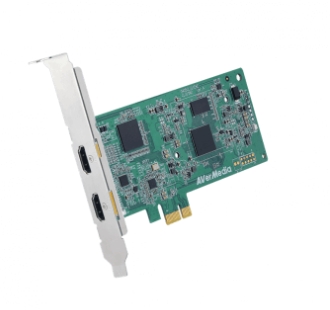Capture Card

Capture card or digitizing card is a device that is capable of digitizing video signals through certain interfaces (e.g., HDMI, USB, S-Video, or other analog input) and storing the results on a computer using various compression algorithms (typically MPEG1, MPEG2 or MPEG4). Modern capture cards often use several algorithms for video compression at once. Such devices make it possible not only to convert analog video signals to digital, but vice versa too.
Working Principles of Capture Card
If the PC does not have an HDMI-input (do not confuse with HDMI-output), it is necessary to connect the camera to a capture card in order to convert analog signal into digital (or vice versa). It will serve as an interface between the devices. To digitize an image, a capture card has to be connected both to a computer and a camera in order to transfer the signal. The result will be stored on a computer.
Types of Capture Cards:
- Capture cards with hardware video compression. They digitize analog video and compress it into formats such as DV and MPEG-2 “on the fly”. Such cards are the most expensive, because they can quickly digitize video data without using the CPU. It is possible to relieve a computer’s CPU by using hardware compression cards.
- Capture cards without hardware video compression. Digitize video without any compression. Most of them are equipped with a TV receiver. This type of card is much cheaper than the first and performs conversion by using the CPU’s capabilities.
In video conferencing it is very important for a signal from the camera to be transmitted and digitized without any delay and in real time. Therefore, it is preferable to use high-quality professional hardware capture cards capable of digitizing video streams even in Full HD quality.



Follow us on social networks